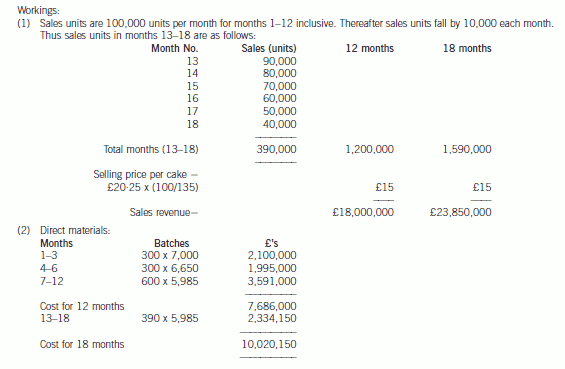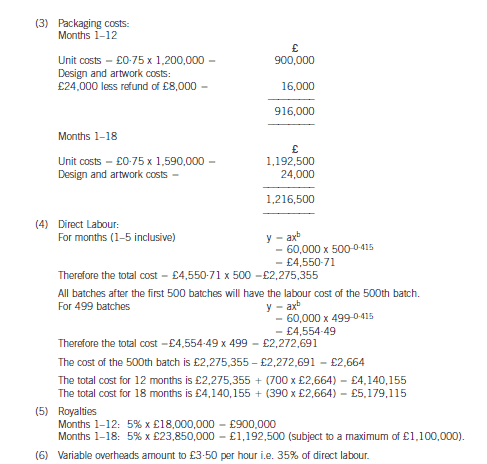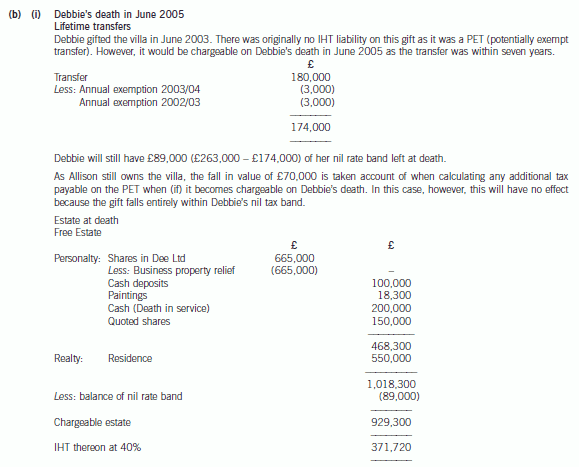ACCA没有多大用?认可度低?了解一下吧!
发布时间:2020-01-13
ACCA资格被认为是"国际财会界的通行证",许多国家立法许可ACCA会员从事审计、投资顾问和破产执行工作。在国内ACCA这个证书也还是非常认可的,许多企业包括四大经理以上任职都有高级会计证书的要求,例如ACCA,CPA,CFA等等,在外企或者大型企业对ACCA持证者还是非常看重的。那么,拿到ACCA证书都有哪些好处呢?
1.进入中国时间早,先发优势大
ACCA从较早时间,就在国际上颇具影响力。1904年ACCA成立于世界金融中心之一英国,其会员资格得到欧盟立法以及许多国家公司法的承认。1999年,联合国推出《职业会计师专业教育国际大纲》,其蓝本便是ACCA课程大纲。ACCA在国际上的影响力毋庸置疑。在中国虽然只有CICPA具备签字权,但是这不能否定其他资格认证考试的含金量和权威程度。ACCA早期会员如今在中国手里握着较大发言权,他们认可ACCA代表的含义,这点非常重要。
2.全球认可
ACCA会员资格在国际上得到广泛认可,尤其得到欧盟立法以及许多国家公司法的承认。目前,ACCA在全球拥有超过7500家认可雇主,其中主要为世界500强企业和国际国内大型知名企业,这些雇主将优先为ACCA的学员和会员提供实习和就业的机会。
3.广阔的就业前景
ACCA被誉为“财会领域的MBA证书”,会员薪资普遍较高,大多数会员及准会员在全球性跨国公司、跨国银行、会计师事务所等企事业单位担任重要的管理职务。成为ACCA会员,将拥有广阔的就业前景和良好的职业发展空间。
4.证书与学位相互补充
成为ACCA会员,不仅可以获得ACCA各阶段等级证书,还有机会获得由英国牛津-布鲁克斯大学颁发的应用会计理科学士学位以及由伦敦大学颁发的专业会计硕士学位。同时,ACCA学员,可申请攻读海外名校硕士学位,甚至可获得研究生一年课程的免试待遇。此外,ACCA会员们的加薪的空间也很大,已有数据显示,有63%的ACCA学员与准会员在工作一到二年获得加薪,其中,更有超过三分之二人数加薪幅度在6%以上。ACCA会员的年薪大多集中在10万至80万之间,部分会员的年薪更是达到了100万到150万,远高于市场上普通财务人员的收入,并超过研究生以及MBA毕业生的平均年收入。
看了上面的内容,相信大家对ACCA的作用以及认可度也有了一定的认识。如果还想了解更多信息,欢迎来51题库考试学习网留言咨询。
下面小编为大家准备了 ACCA考试 的相关考题,供大家学习参考。
(b) With reference to CF Co, explain the ethical and other professional issues raised. (9 marks)
(b) There are several issues that must be addressed as a matter of urgency:
Extra work must be planned to discover the extent of the breakdown in internal controls that occurred during the year. It is
important to decide whether the errors were isolated, or continued through the accounting period and whether similar errors
have occurred in other areas e.g. cash receipts from existing customers or cash payments. A review of the working papers of
the internal audit team should be carried out as soon as possible. The materiality of the errors should be documented.
Errors discovered in the accounting systems will have serious implications for the planned audit approach of new customer
deposits. Nate & Co must plan to expand audit testing on this area as control risk is high. Cash deposits will represent a
significant class of transaction in CF Co. A more detailed substantive approach than used in prior year audits may be needed
in this material area if limited reliance can be placed on internal controls.
A combination of the time spent investigating the reasons for the errors, their materiality, and a detailed substantive audit on
this area means that the audit is likely to take longer than previously anticipated. This may have cost and recoverability
implications. Extra staff may need to be assigned to the audit team, and the deadline for completion of audit procedures may
need to be extended. This will need to be discussed with CF Co.
Due to the increased audit risk, Nate & Co should consider increasing review procedures throughout the audit. In addition CF
Co is likely to be a highly regulated company as it operates in financial services, increasing possible attention focused on the
audit opinion. These two factors indicate that a second partner review would be recommended.
A separate issue is that of Jin Sayed offering advice to the internal audit team. The first problem raised is that of quality control.
A new and junior member of the audit team should be subject to close direction and supervision which does not appear to
have been the case during this assignment.
Secondly, Jin Sayed should not have offered advice to the internal audit team. On being made aware of the errors, he should
have alerted a senior member of the audit team, who then would have decided the action to be taken. This implies that he
does not understand the limited extent of his responsibilities as a junior member of the audit team. Nate & Co may wish to
review the training provided to new members of staff, as it should be made clear when matters should be reported to a senior,
and when matters can be dealt with by the individual.
Thirdly, Jin Sayed must be questioned to discover what exactly he advised the internal audit team to do. Despite his academic
qualification, he has little practical experience in the financial information systems of CF Co. He may have given inappropriate
advice, and it will be crucial to confirm that no action has been taken by the internal audit team.
The audit partner should consider if Nate & Co are at risk because of the advice that has been provided by Jin Sayed. As he
is a member of the audit team, his advice would be considered by the client as advice offered by Nate & Co, and the partner
should ascertain by discussion with the client whether this advice has been acted upon.
Finally Nate & Co should consider whether as a firm they could provide the review of the financial information technology
system, as requested by CF Co. IFAC’s Code of Ethics, and ACCA’s Code of Ethics and Conduct places restrictions on the
provision of non-audit services. Nate & Co must be clear in what exactly the ‘review’ will involve.
Providing a summary of weaknesses in the system, with appropriate recommendations is considered part of normal audit
procedures. However, given the errors that have arisen in the year, CF Co may require Nate & Co to design and implement
changes to the system. This would constitute a self-review threat and should only be considered if significant safeguards are
put in place, for example, using a separate team to provide the non-audit service and/or having a second partner review of
the work.
(c) Acting as an external consultant to Semer, discuss the validity of the proposed strategy to increase gearing, and explain whether or not the estimates produced in (b) above are likely to be accurate. (10 marks)
(c) Report on the proposed adjustment of gearing through the repurchase of ordinary shares
The effect of capital structure on the value of a company is not fully understood.
Increasing the proportion of debt in the capital structure may reduce the overall cost of capital due to the interest on debt being a tax allowable expense. Even if a company is in a non-tax paying position, mixing additional low cost debt with relatively expensive equity might reduce the weighted average cost of capital. In such circumstances the proposed strategy to increase gearing would have some validity. However, increasing gearing can also bring problems. Risk to investors, and therefore the required returns on equity and debt, will increase as gearing increases. Very high levels of gearing might lead to
direct and indirect bankruptcy costs, with a detrimental effect on cash flow and corporate value. Any benefits from increasing the proportion of debt in the capital structure will be to some extent offset as a result of increased risk with high gearing.
The revised estimates of the effect on the cost of capital and value of Semer are not likely to be accurate. Reasons for this include:
(i) The company will not be able to repurchase the necessary shares at their current market value. Approximately £240 million value of equity would need to be repurchased, or more than one third of the existing market value of equity.
As repurchases take place it is likely that the share price will significantly increase.
(ii) The cost of debt is unlikely to remain constant. As more debt is issued lenders will demand a higher interest rate to compensate for the extra risk resulting from higher gearing levels. The cost of equity will also increase with higher gearing. These effects will increase the weighted average cost of capital to a higher level than that estimated.
(iii) The precise market values of debt and equity after the repurchase are unknown, and again will reflect the market attitude
to the new risk of the higher gearing.
The value of the company is likely to be much lower than that estimated, as the weighted average cost of capital is likely to be underestimated.
1 The Great Western Cake Company (GWCC) is a well-established manufacturer of specialist flour confectionery
products, including cakes. GWCC sells its products to national supermarket chains. The company’s success during
recent years is largely attributable to its ability to develop innovative products which appeal to the food selectors within
national supermarket chains.
The marketing department of Superstores plc, a national supermarket chain has asked GWCC to manufacture a cake
known as the ‘Mighty Ben’. Mighty Ben is a character who has recently appeared in a film which was broadcast
around the world. The cake is expected to have a minimum market life of one year although the marketing department
consider that this might extend to eighteen months.
The management accountant of GWCC has collated the following estimated information in respect of the Mighty Ben
cake:
(1) Superstores plc has decided on a launch price of £20·25 for the Mighty Ben cake and it is expected that this
price will be maintained for the duration of the product’s life. Superstores plc will apply a 35% mark-up on the
purchase price of each cake from GWCC.
(2) Sales of the Mighty Ben cake are expected to be 100,000 units per month during the first twelve months.
Thereafter sales of the Mighty Ben cake are expected to decrease by 10,000 units in each subsequent month.
(3) Due to the relatively short shelf-life of the Mighty Ben cake, management has decided to manufacture the cakes
on a ‘just-in-time’ basis for delivery in accordance with agreed schedules. The cakes will be manufactured in
batches of 1,000. Direct materials input into the baking process will cost £7,000 per batch for each of the first
three months’ production. The material cost of the next three months’ production is expected to be 95% of the
cost of the first three months’ production. All batches manufactured thereafter will cost 90% of the cost of the
second three months’ production.
(4) Packaging costs will amount to £0·75 per cake. The original costs of the artwork and design of the packaging
will amount to £24,000. Superstores plc will reimburse GWCC £8,000 in the event that the product is
withdrawn from sale after twelve months.
(5) The design of the Mighty Ben cake is such that it is required to be hand-finished. A 75% learning curve will
apply to the total labour time requirement until the end of month five. Thereafter a steady state will apply with
labour time required per batch stabilising at that of the final batch in month five. The labour requirement for the
first batch of Mighty Ben cakes to be manufactured is expected to be 6,000 hours at £10 per hour.
(6) A royalty of 5% of sales revenue (subject to a maximum royalty of £1·1 million) will be payable by GWCC to the
owners of the Mighty Ben copyright.
(7) Variable overheads are estimated at £3·50 per direct labour hour.
(8) The manufacture of the Mighty Ben cake will increase fixed overheads by £75,000 per month.
(9) In order to provide a production facility dedicated to the Mighty Ben cake, an investment of £1,900,000 will be
required and this will be fully depreciated over twelve months.
(10) The directors of GWCC require an average annual return of 35% on their investment over 12 months and
18 months.
(11) Ignore taxation and the present value of cash flows.
Note: Learning curve formula:
y = axb
where y = average cost per batch
a = the cost of the initial batch
x = the total number of batches
b = learning index (= –0·415 for 75% learning rate)
Required:
(a) Prepare detailed calculations to show whether the manufacture of Mighty Ben cakes will provide the required
rate of return for GWCC over periods of twelve months and eighteen months. (20 marks)



(b) (i) Calculate the inheritance tax (IHT) that will be payable if Debbie were to die today (8 June 2005).
Assume that no tax planning measures are taken and that there has been no change in the value of any
of the assets since David’s death. (4 marks)

声明:本文内容由互联网用户自发贡献自行上传,本网站不拥有所有权,未作人工编辑处理,也不承担相关法律责任。如果您发现有涉嫌版权的内容,欢迎发送邮件至:contact@51tk.com 进行举报,并提供相关证据,工作人员会在5个工作日内联系你,一经查实,本站将立刻删除涉嫌侵权内容。
- 2020-01-10
- 2020-01-10
- 2020-03-11
- 2020-04-22
- 2020-02-14
- 2020-02-28
- 2020-01-10
- 2020-01-10
- 2020-01-09
- 2020-04-09
- 2020-08-14
- 2020-01-10
- 2020-01-10
- 2019-07-20
- 2020-04-21
- 2020-04-24
- 2020-01-10
- 2020-02-27
- 2020-02-15
- 2020-01-10
- 2020-03-07
- 2020-04-12
- 2020-04-20
- 2020-01-10
- 2020-01-10
- 2020-01-27
- 2020-04-24
- 2020-01-10
- 2020-05-09
- 2020-01-10